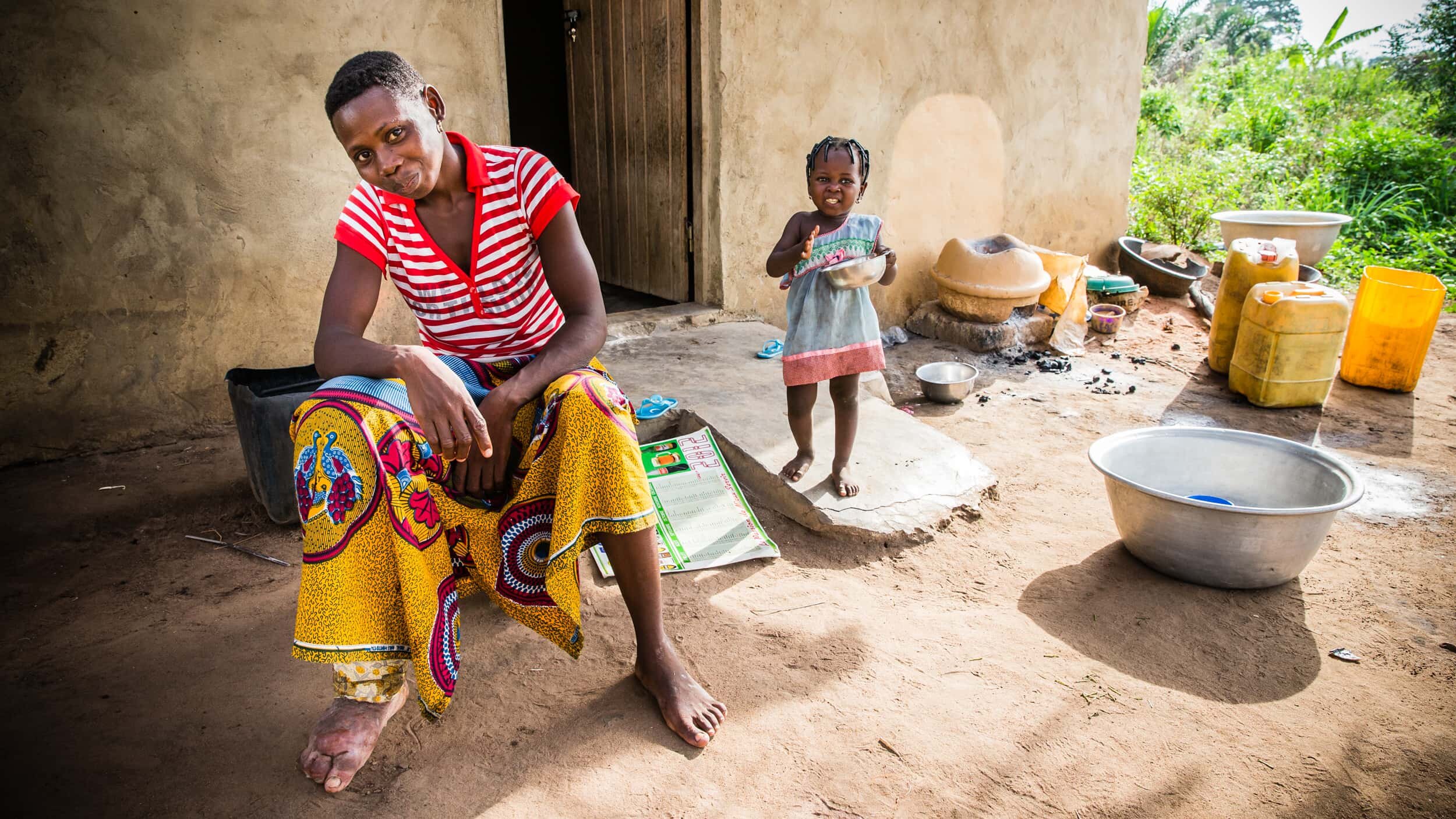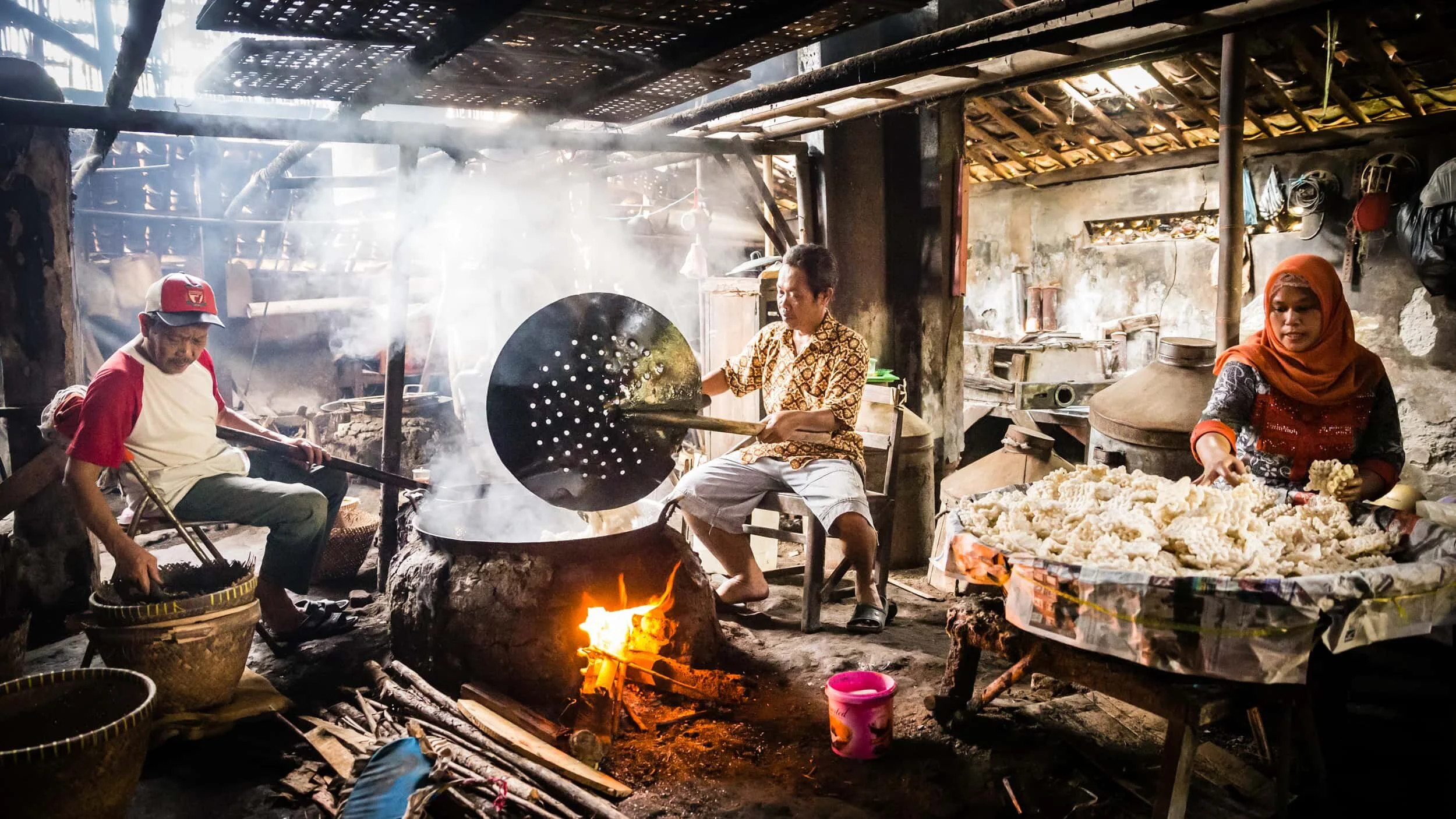
Influencers
Ending Neglected Tropical Diseases
If you live in the west, it’s unlikely you’ll be familiar with the people in these pictures. They’re influencers of sorts, but perhaps not in the conventional sense. Their pictures and stories have been used extensively to reduce stigma and help visualise change. Published in reports, used online and exhibited in museums, they are the unsung heroes of the global effort to eliminate neglected tropical diseases.
It takes courage to invite a media team into your community and your home, particularly when the focus is on health. But courage we found, typified by Bhagwati Thapa, who in her picture is inviting us to share afternoon chai before the photography begins.
Every image has a back story even though it’s not always contained in the captions: Amli Devi, who with the help of her daughter, found the confidence to deal with the ‘officialdom’ surrounding public health photography despite being unable to read or write; Dilip Kumar and his family sleeping rough at the railway station because they couldn’t afford a hotel on their long journey to be treated; and the children who turned up at school during the holidays to continue their studies, afterwards taking us home to meet their families.
Whilst neglected tropical diseases are suffered disproportionately by the poor, this photography is not about poverty. These pictures are intended to highlight the spirit of resilience in the people we met and to celebrate their willingness to encourage others in the fight to eliminate neglected tropical diseases.
Commissioned by GSK
GSK is a major partner in the global campaign to eliminate neglected tropical diseases, spearheaded by the World Health Organisation.
Exhibited
Natural History Museum, London
American Museum of Natural History, New York
World Health Organisation, Geneva
United Nations, Geneva
World Bank HQ, Washington
Carter Centre, Atlanta
GSK HQ, London
Top photo: Children play in the streets of Karaikal in Tamil Nadu where lymphatic filariasis has been targeted for elimination.
Below: A community health worker cycles between villages to educate families and communities about malaria, maternal health care and neglected tropical diseases. Simple images, discussion groups and a little humour ensure that the message is clearly understood. Tandahimba district, Tanzania.
Bhagwati Thapa, who suffers with lymphatic filariasis, asks us if we would like to drink chai, which she made using fresh milk from one of her two cows. Bungmati, Nepal.
Lymphatic filariasis (LF), often known as elephantiasis, is a devastating parasitic worm infection spread by mosquitoes. The disease threatens over 800 million people globally, yet few people outside the affected countries have ever heard of it. LF is found in the tropical and sub-tropical areas of Africa, Asia, the Pacific, the Middle East and the Americas.
The infection can cause life-long severe and extensive swelling of the lower limbs (lymphedema), which can be accompanied by painful episodes of fever. People with lymphedema are prone to bacterial infections that can lead to a mobility-limiting condition where the skin thickens and hardens. In men, elephantiasis can also result in the swelling of the scrotum (hydrocele). LF is one of the world’s leading causes of physical disability and the economic cost of working days lost as a result of LF runs into billions of dollars.
Darai Lal-Bahadur walks home with a little food for his livestock of two, a buffalo and a cow, his main source of income. In addition to living with lymphatic filariasis, Darai broke his fingers in an accident when he was younger. With no access to medical care at that time, his fingers were never properly set, making everyday tasks more difficult. Despite these challenges, Darai was surprisingly upbeat, and spoke warmly of the support he receives from his family, friends and the community.
The cows in the picture do not belong to Darai, and they didn't knock him over.
Salyantar, Nepal.
Degbe Ablavi is a woman most busy mothers can identify with. Here she finally sits down after a long day. In the morning she collected water, then carried her maize and cassava to the local miller for grinding. In the afternoon she worked in the family's yam field before sweeping the yard and preparing dinner for her family in the evening. All that's left to do now is the washing up, tidy the kitchen and put her daughter, Sitchope, to bed before the sun goes down.
Agbati, southern Togo.
It takes courage to invite a media team into your home like Amli Devi did. And when you can’t read or write, paperwork and foreigners can suddenly seem overwhelming. Enter Kanchan. A keen student at school, Kanchan understood her mother’s anxiety and remained at her side during our visit. Strong and vigilant, she reassured her as we documented Amli’s experience of living with lymphatic filariasis (LF), which would help other sufferers by showing them how to better manage the condition.
Whilst LF can be prevented, for those who have developed the condition, it is not possible to reverse the lymphoedema or the associated tissue damage. With a compromised immune system, regular washing is essential to minimise skin deterioration, although this can be a challenge when clean water is not easily accessible.
Bihar, India.
Khamdani (centre) lives with lymphatic filariasis which affects his right leg. He chose to work in a rice cracker factory rather than on the land to reduce the risk of cuts and serious infection to provide a more sustainable income for his family.
Pekalongan City, Indonesia.
Sunita Devi, an experienced local health worker, stands with Haseena, a bright and courteous teenager with a positive outlook on life. When Haseena developed a patch of numb discoloured skin on her leg, Sunita recognised the symptoms as the early stages of leprosy and arranged for her to be assessed. Thanks to Sunita’s experience and rapid identification, Haseena is now receiving treatment, halting the growth of this ancient and debilitating disease.
Leprosy (also known as Hansen’s disease) is a chronic infectious disease caused by bacteria, which is often spread through droplets from the nose and mouth. The disease, which can have a long incubation period, causes disfiguring lesions on the skin as well as nerve damage. In turn, the nerve damage leads to unnecessary injury because of the inability to feel pain.
Bihar, India.
Students play a game during a break from their exams at Be PA De Zouza school in Lomé. The children at the school have benefited from a nationwide deworming programme, a Togo Health Service initiative supported by GSK and WHO to control soil transmitted helminths (intestinal worms).
Lomé, Togo.
Amina comforts her son, Adam, who is too unwell to go to school. The local health worker suspects soil-transmitted helminths (STHs) as the the cause of Adam’s illness. STHs - commonly known as intestinal worms - are among the most common causes of infection in children living in the developing world. STHs impair the nutritional status of the individuals they infect by feeding on host tissues - including blood, which leads to a loss of iron and protein - increasing malabsorption of nutrients.
Nutritional impairment caused by soil-transmitted helminthiasis (STH) is recognised to have a significant impact on growth and physical development. In addition to their negative nutritional effects, STH infections are also reported to impair cognitive development and limit educational advancement with a resulting impact on the wider economy.
Zanzibar, Tanzania.
Roundworms, whipworms, hookworms and other soil-transmitted helminths have failed to put the brakes on these excited children, running to their after-school learning club at St Monica's Girls School.
Thanks to the ongoing deworming programme in their community, part of a global initiative spearheaded by the World Health Organisation, supported by GSK and The Gates Foundation, these girls can keep on running towards empowerment and education. Cape Coast, Ghana.
Gold Coast, Ghana.
Sauda chats with her friend at Bandamati School in Zanzibar. The pupils have been given Albendazole, Ivermectin and Praziquantel to control lymphatic filariasis, soil transmitted helminths and schistosomiasis. The three conditions are being targeted by the WHO as part of a global campaign to eliminate neglected tropical diseases.
Sauda became the face of the elimination programme to benefit children, featuring in publications and films to educate others about neglected tropical diseases.
Zanzibar, Tanzania.
Dilip Kumar, who suffers from visceral leishmaniasis (VL – also known as kala-azar), stands outside Patna railway station. He has travelled from Munger with his family to seek treatment for his condition at a specialist VL unit in Patna. As a wheat farmer working in rural India, Dilip's risk of exposure to female sand flies, the primary vector for VL, is high. Despite being a quarter of the size of mosquitoes, bites from just five or six infected flies is enough to transmit the disease to humans.
If visceral leishmaniasis progresses, it attacks the immune system and affects the bone marrow and internal organs (including enlargement and impaired function of the spleen and liver), as well as causing irregular bouts of fever, substantial weight loss and anaemia. Without treatment, visceral leishmaniasis has a high fatality rate, usually within two years.
Bihar, India.
Schistosomiasis (also known as bilharzia) is a waterborne parasitic infection which affects more than 240 million of the world’s poorest people. Endemic in 78 countries across Africa, Asia and parts of South America, the disease leads to acute health complications and the deaths of an estimated 200,000 people annually.
Snails are intermediary hosts in the transmission of schistosomiasis. Despite having a reputation as slow movers, snails and their larvae can travel relatively large distances when washed down rivers on loose vegetation, making vector control a challenge.
Regular checks for the presence of snails in watercourses used by local communities are necessary, as illustrated by this government worker in Zanzibar. If the count is above a level considered safe, the water will be treated with a biodegradable molluscicide to control snail numbers.
Pongwe Mtwango, Zanzibar.
Rice farmers, Amina and Fatuma, laugh and let off steam at the end of the day in an area where schistosomiasis is endemic. Often working in waterlogged fields, rice farmers are particularly vulnerable to infection from the parasitic larvae. To reduce the risk for farmers like Amina and Fatuma, this area was recently sprayed to control snails and other vectors carrying schistosomiasis.
Fatuma wanted it to be known that ordinarily her smile would be much bigger were it not for the recent loss of a front tooth.
Pongwe Mtwango, Zanzibar.













